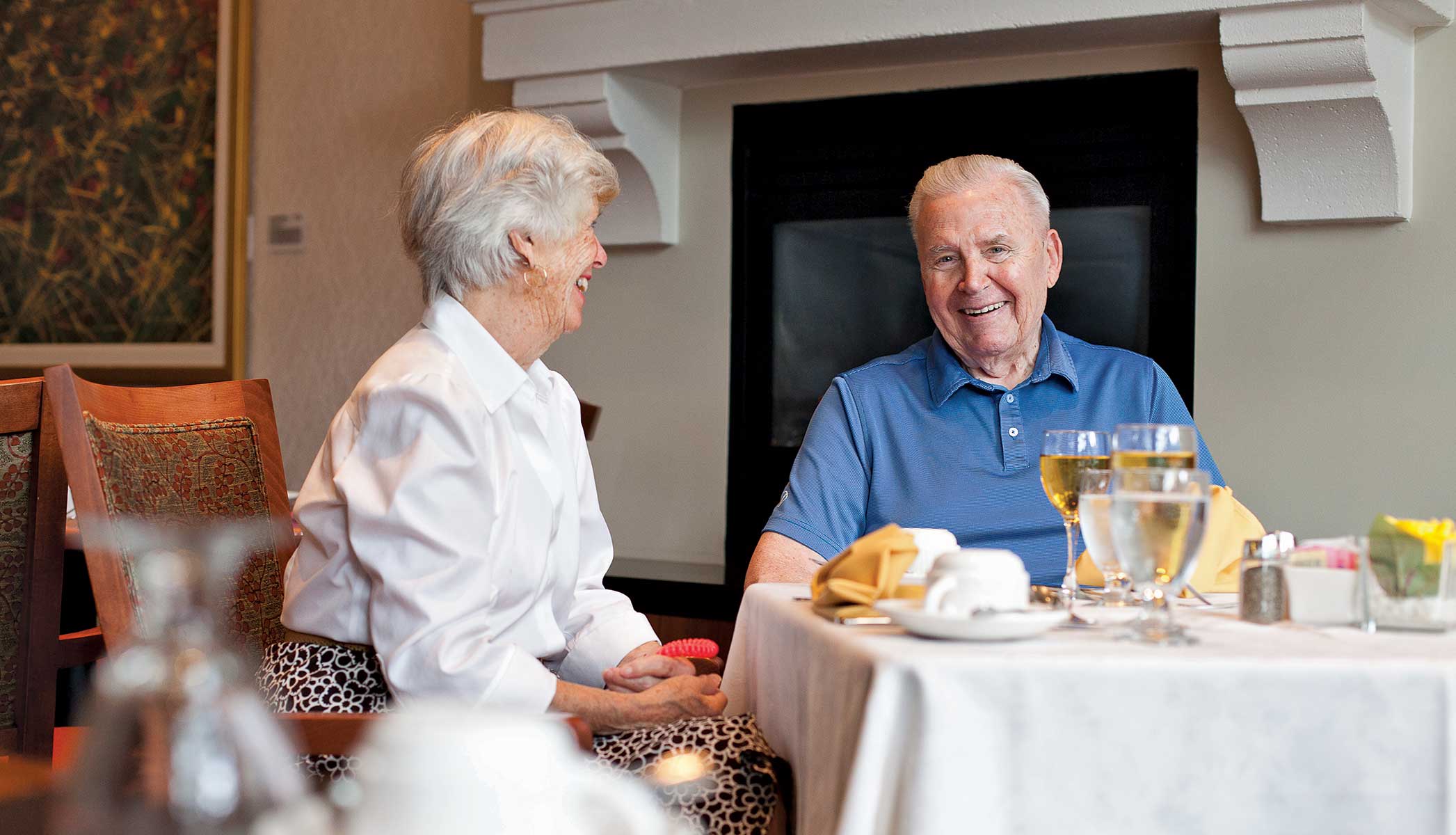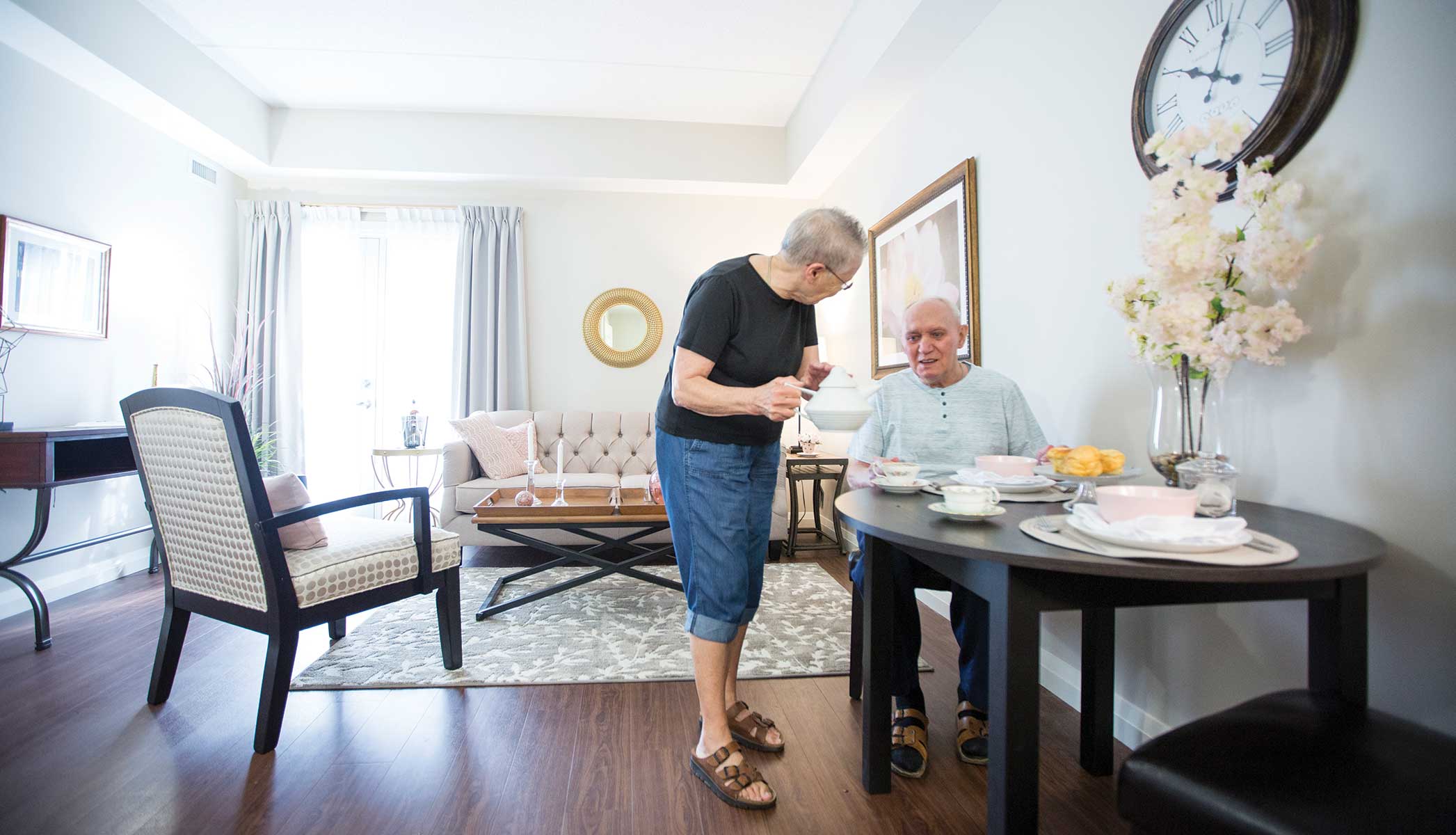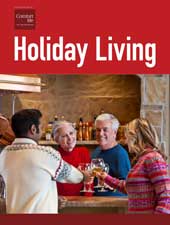“The people here are very adventurous,” says Shawn Allison, food service manager at Sifton Erinview, admitting some surprise at this. When taking over the role of head chef at the community, he wasn’t anticipating people’s love of variety. “They like trying new things here. We’ve had shawarmas, we’ve had jerk chicken, we’ve had a lot of very flavourful food. And they love it.”

We’ve all sat down to meals in restaurants and faced a challenge from tablemates to try something new or different. Something about eating with others brings out the adventurer in all of us, and we’re likely to eat more or greater variety. Chefs at other communities echo Allison’s appreciation for seniors’ expansive tastes—as well as the challenges that can result. “Seniors have more vibrant taste than anyone gives them credit for,” says Dave Shakespear, chef at Aberdeen Gardens in Hamilton. “They’re just as interested in food, in learning, and in trying new things as the rest of us.”
Kerry Wickens at Villagia in the Glebe has over eight years’ experience preparing food in retirement homes. “You have to keep a captive audience 365 days a year, three meals a day, keeping everything fresh and new, and rotating the menues so people stay interested.” Our naturally exploratory nature is stymied when we’re cooking for ourselves, though. For many seniors living alone or having been widowed, cooking is a challenge, one that can hinder a proper diet.
At Symphony Senior Living Orleans, Executive Director Jodi Davidson tells a typical story of a senior who moved in after family voiced concern about her weight. “When people are home alone, they don’t want to rely on others to help. People in that situation will often go back to basics and eat only simple things like soup or toast.” “If someone is simply feeling hungry, they can put a piece of cheese between two slices of bread and satisfy that basic need,” says Divakar Raju, Corporate Manager of Culinary Services for Delmanor. “But, at our communities, we offer people something well beyond a simple meal. Dining here is a social experience, to join and ‘break bread’ with interesting companions at a beautifully set table. We want to give them a truly memorable dining experience, not just to ‘eat and go.’” Communities like Delmanor tap into something elementally human—and sometimes forgotten—when people eat together. Read more about dining at Delmanor.
Many mature adults raised their families at a time when the custom was to eat around the table together. As an empty-nest couple or living on their own, they may have lost the structure inherent in family mealtimes. It’s a time to get together with friends but it’s also a time to meet new companions—a word with roots in Latin, meaning “with whom one shares bread.”
The social structure provided by eating is something many see recaptured in a senior care setting. “Meals are one of the big deals here,” says Ted Fenwick at V!VA Barrhaven in Ottawa. “We’ve been perfectly surprised by the food here. You come into the dining room and you find someone to sit with and everybody’s very congenial. I know it’s hard to satisfy a large group of people, but they’ve done a very good job here.”

Mealtime is one of the social highlights of life at V!VA Barrhaven, as in many communities. For people who might have been neglecting healthy eating, that often means they eat more. Ted adds something many other retirement community seniors would agree with: “I’ve put on weight since I’ve moved here.” He laughs, “I’ve got to go back on the golf course to get it off!” Great times around the dinner table inspire people like Ted to boost their interest in golf or other exercise. Being together makes it easy to eat more, and it also becomes more natural to get active together, another aspect of life in retirement communities.



